10. A Yurt Maker's Haven
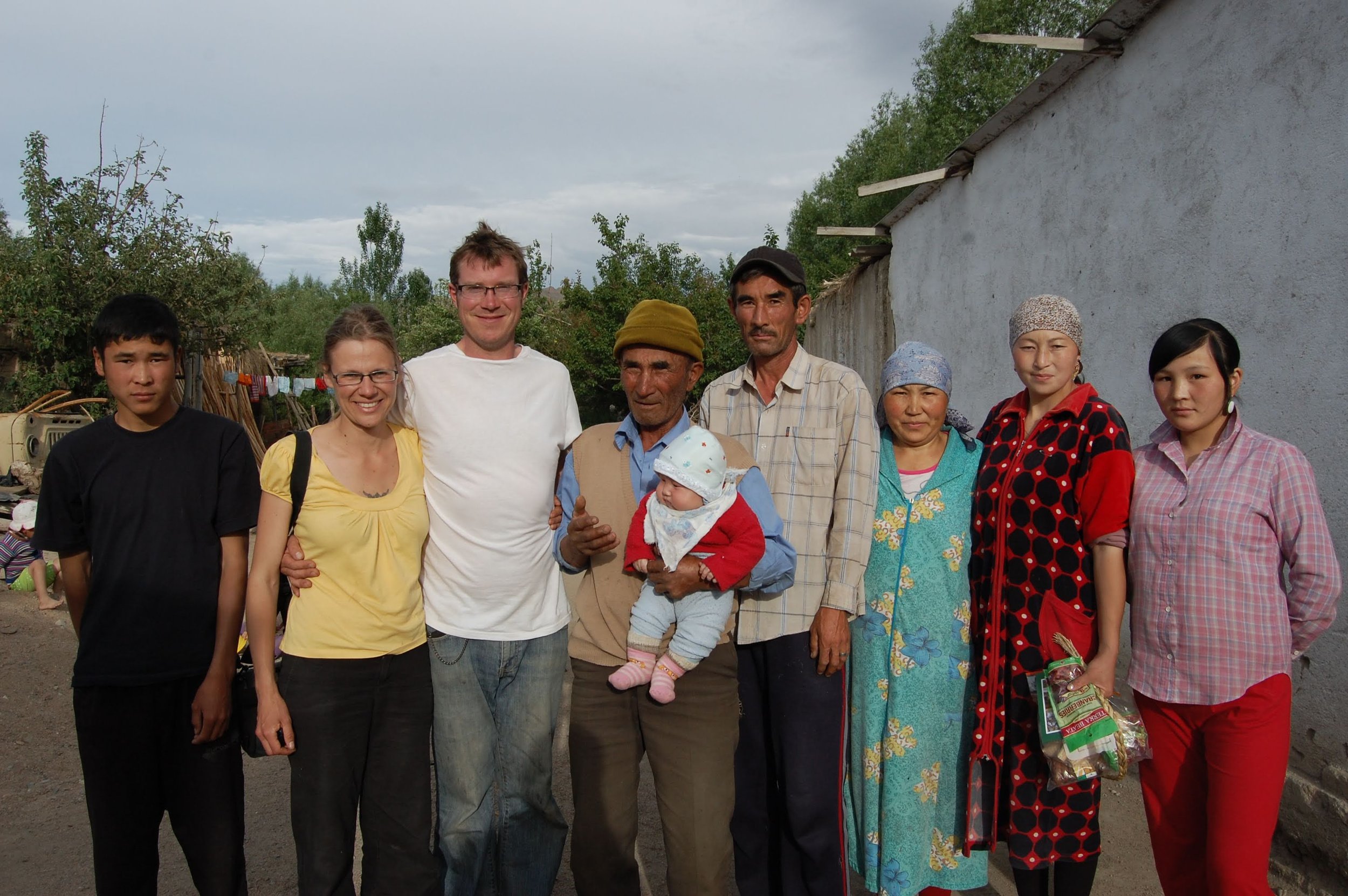
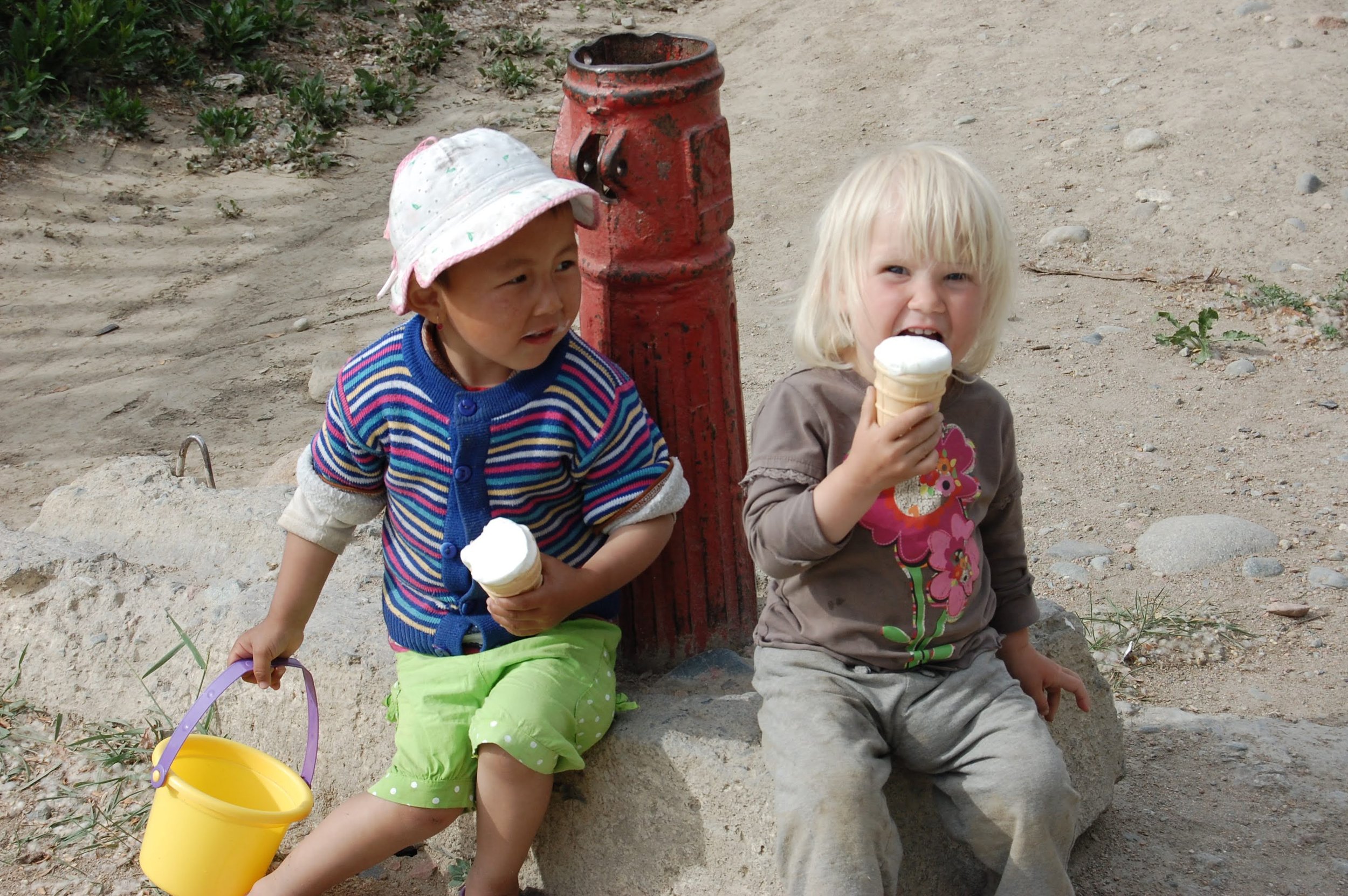
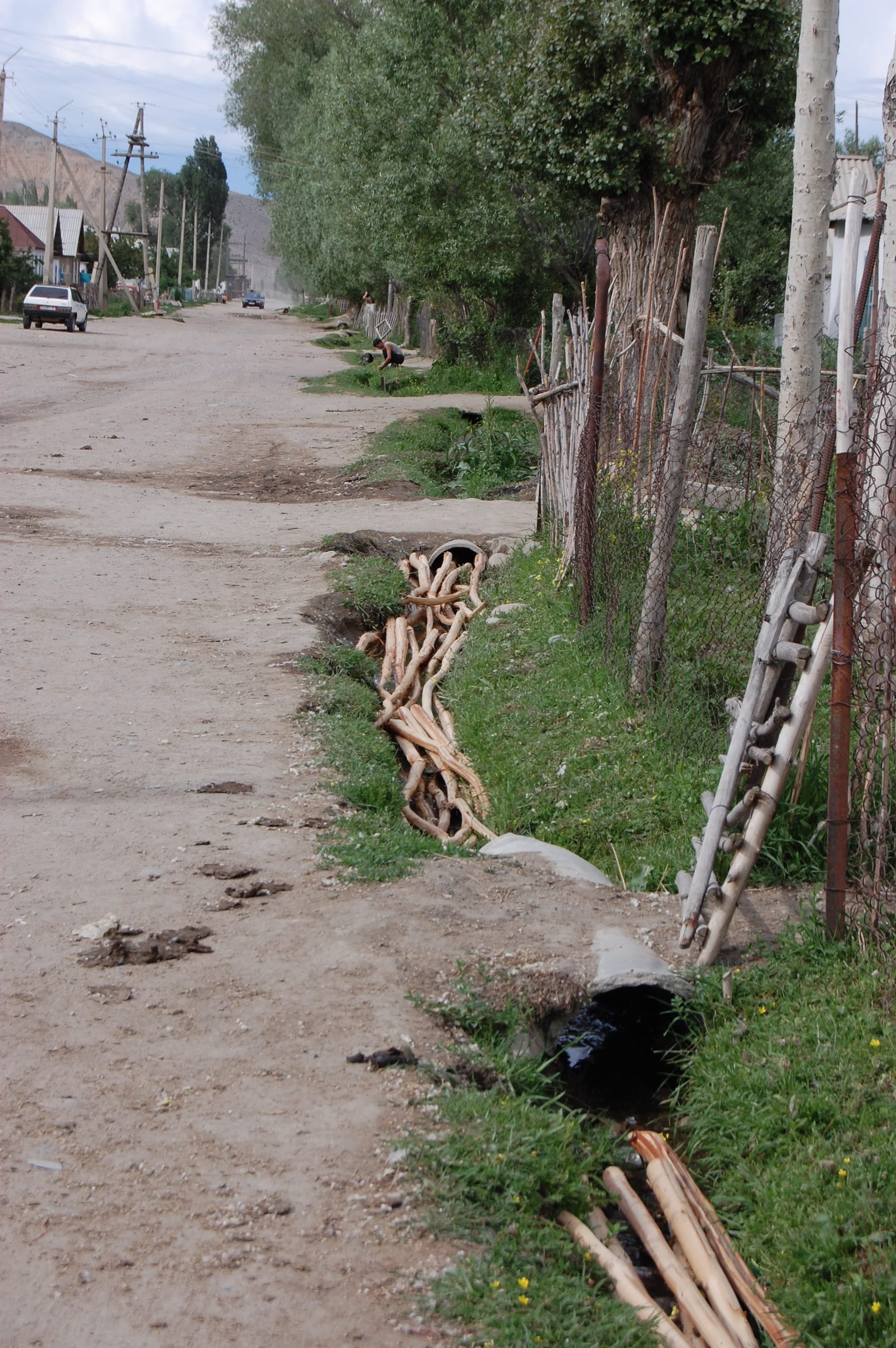
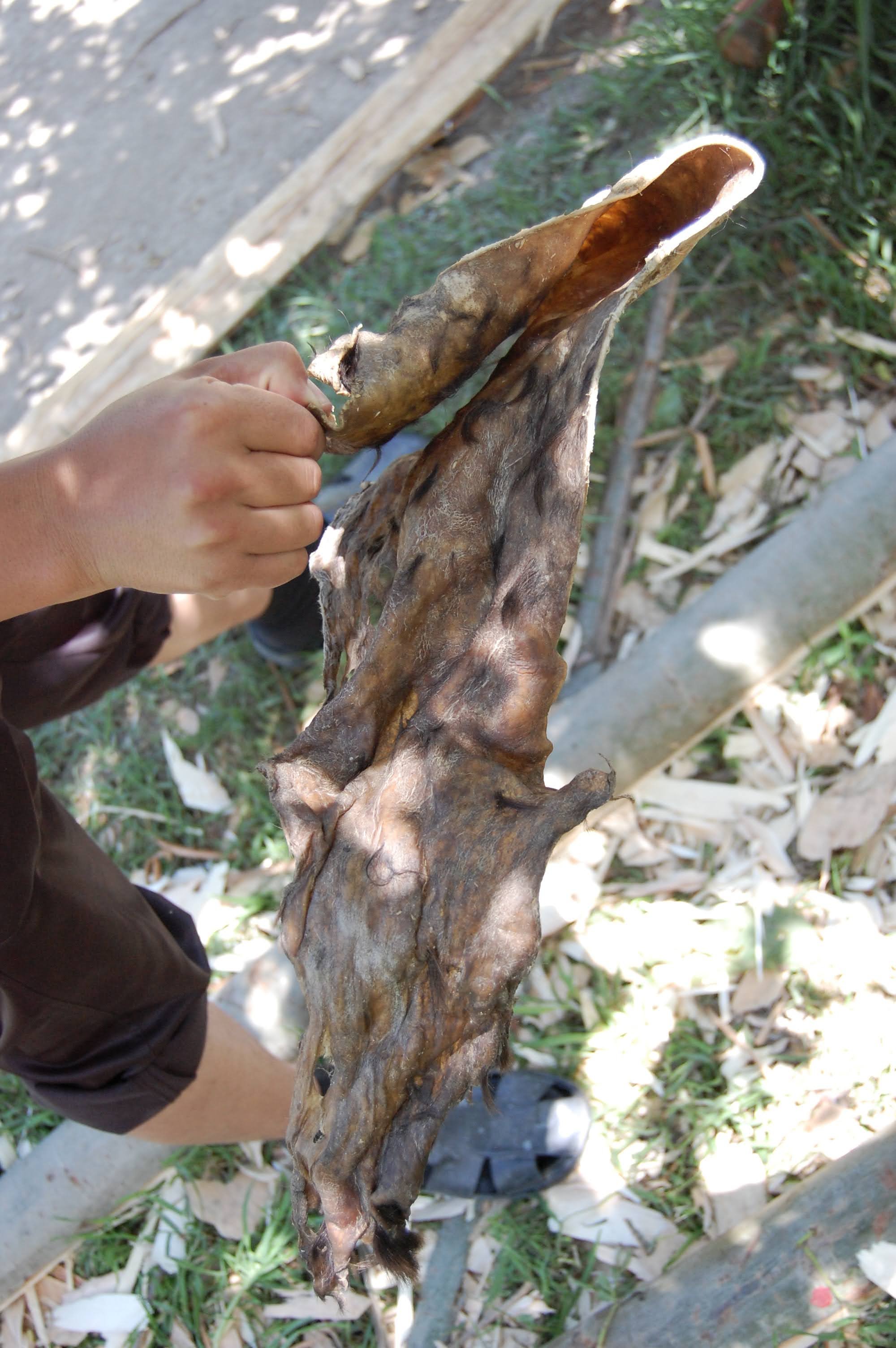
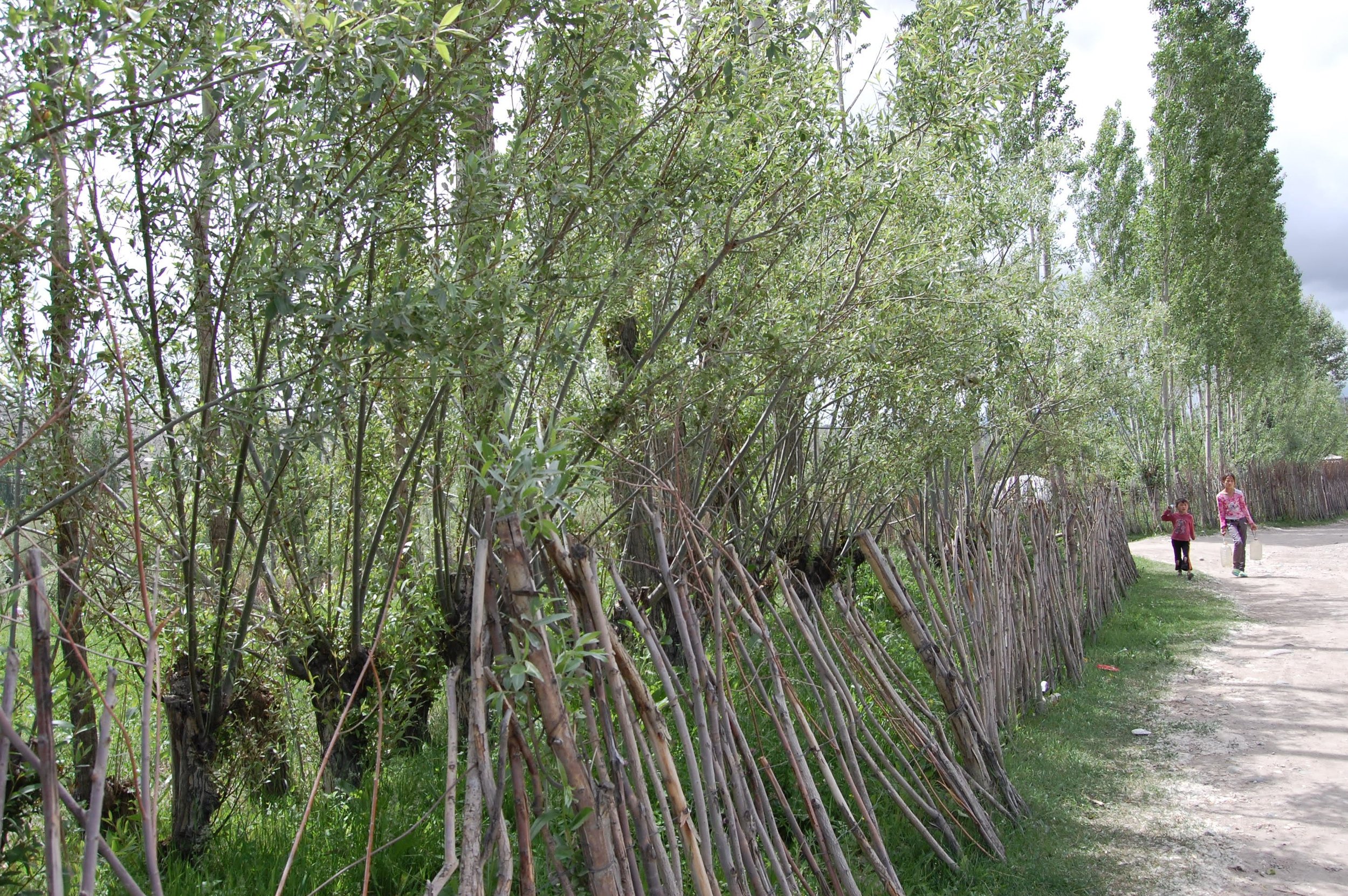
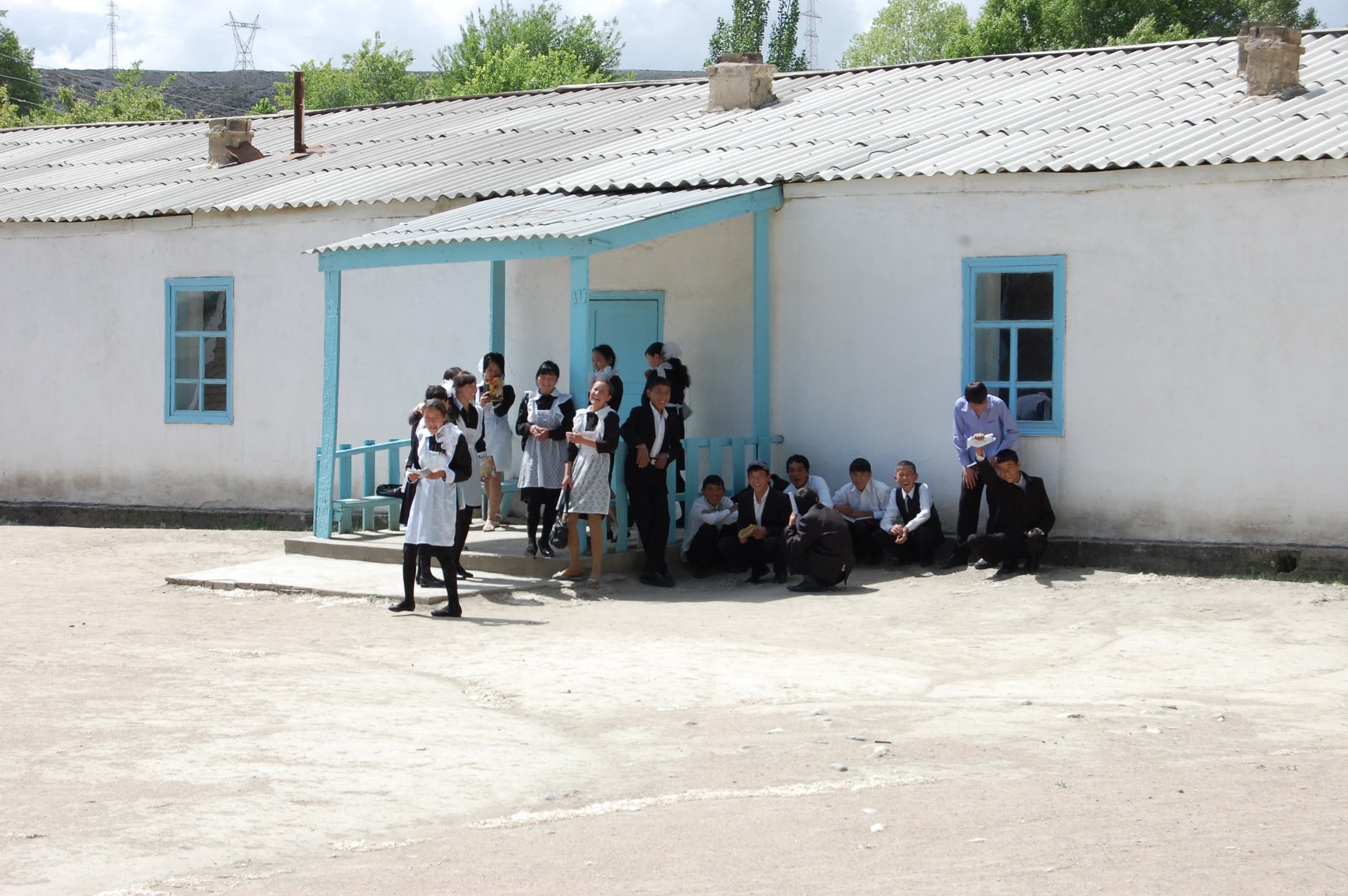
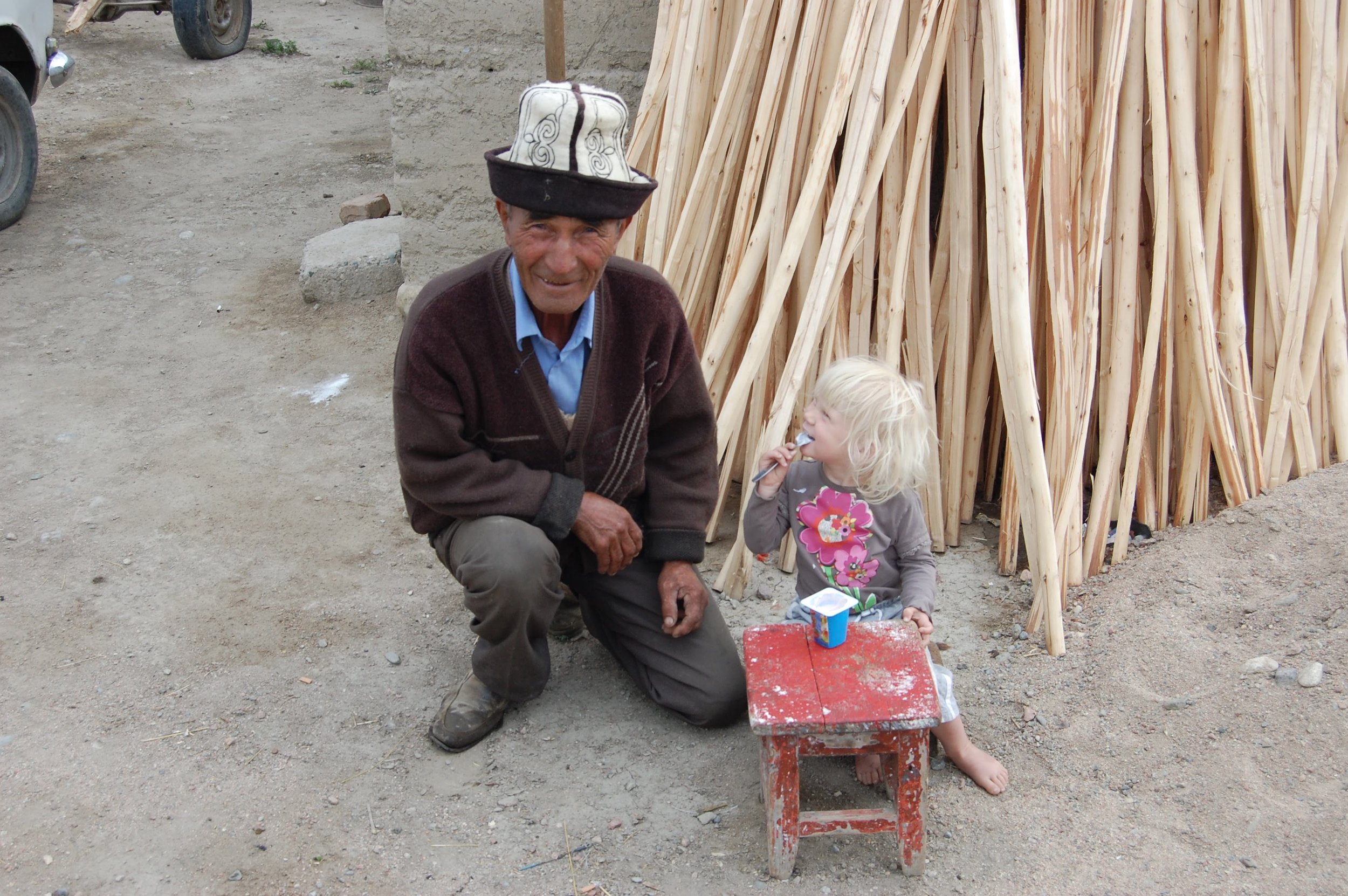
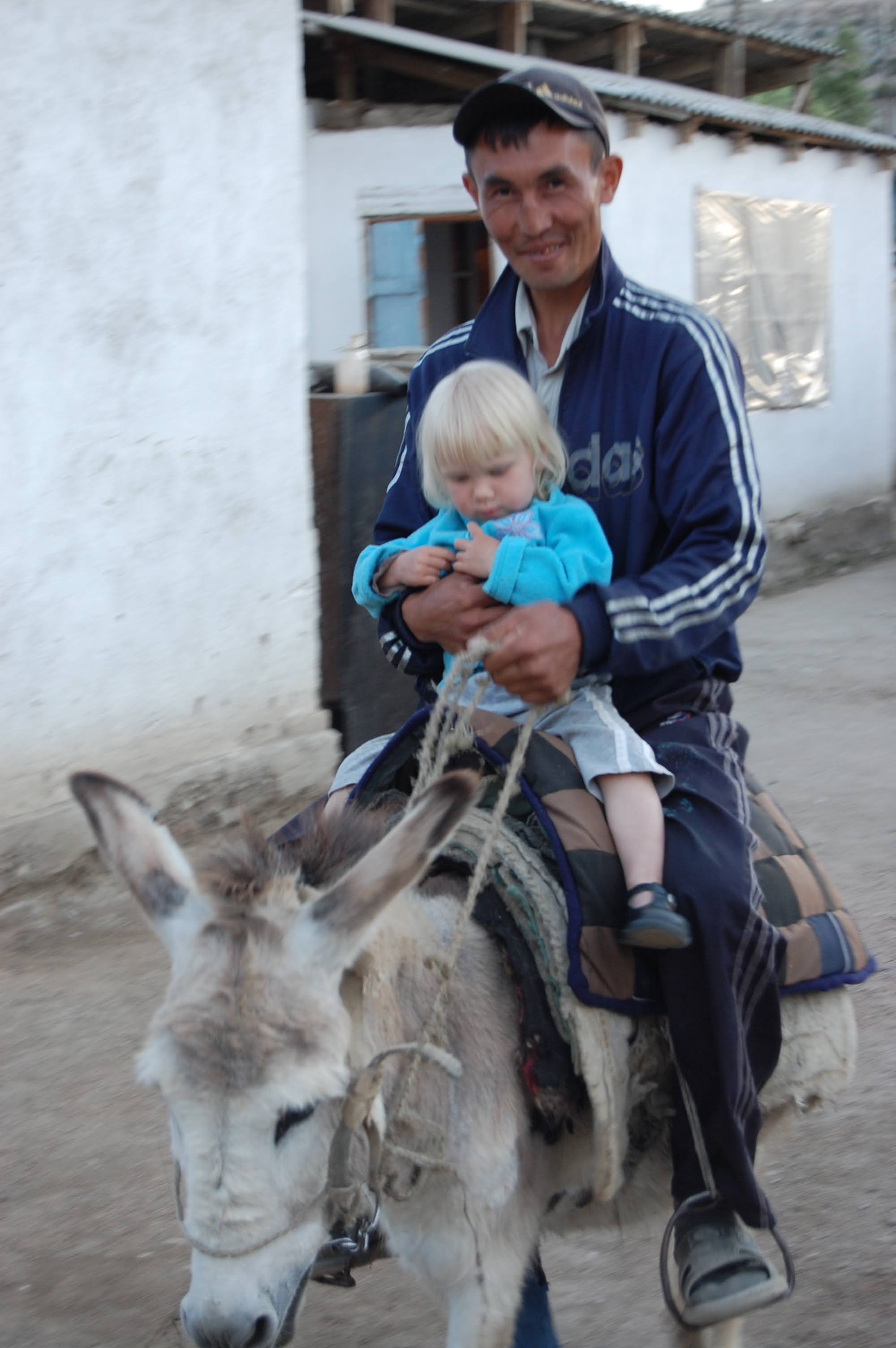
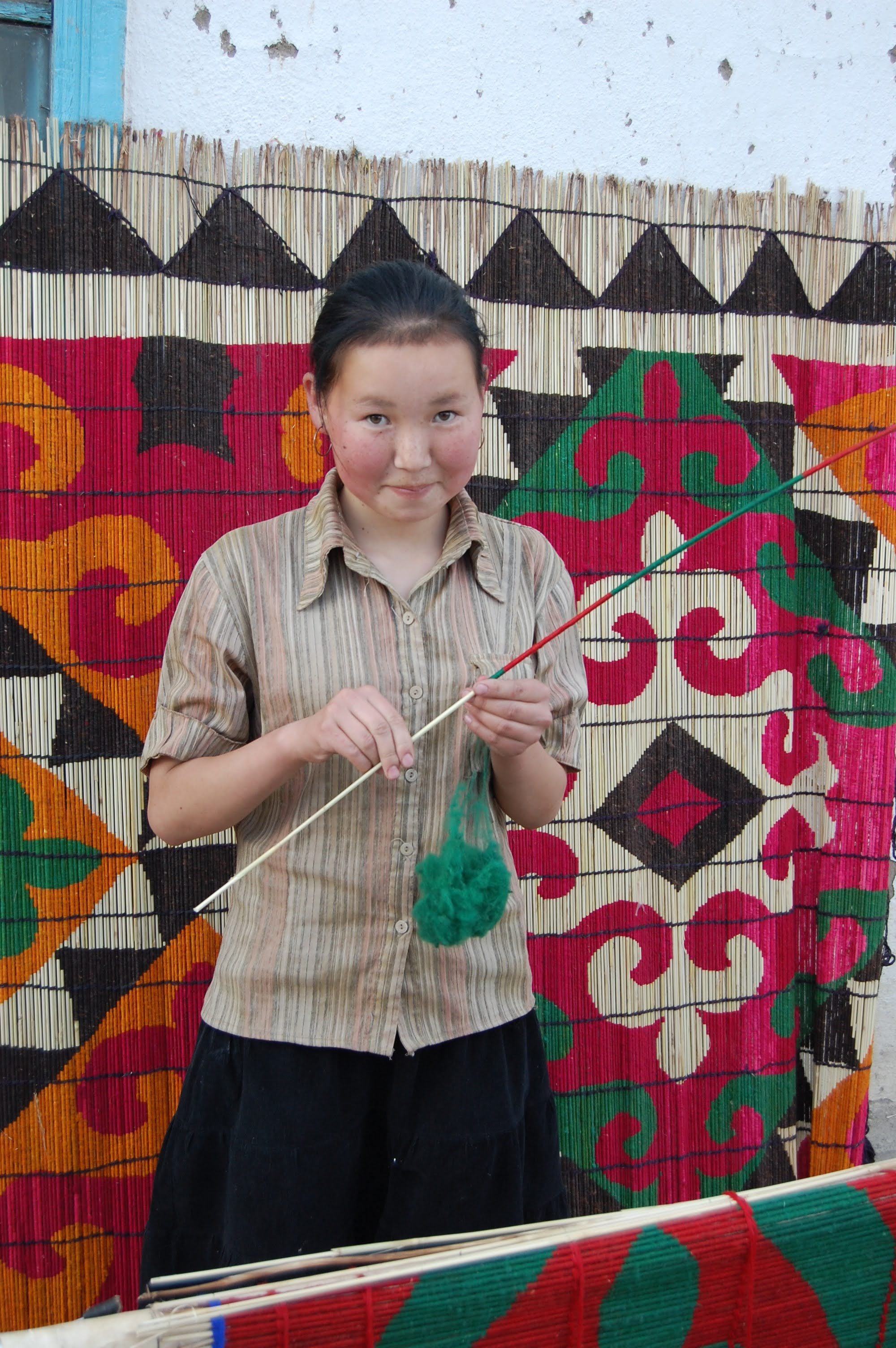
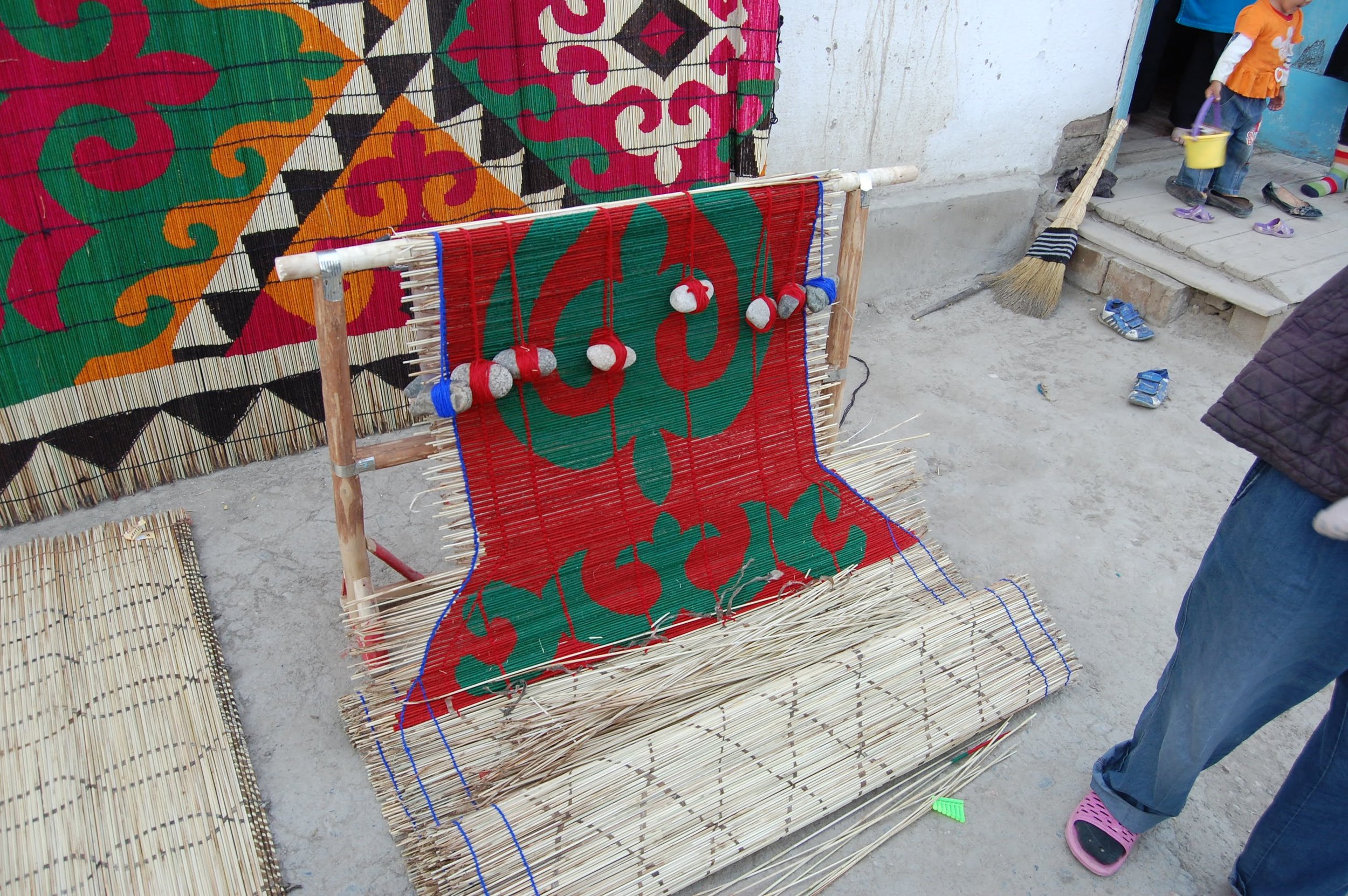
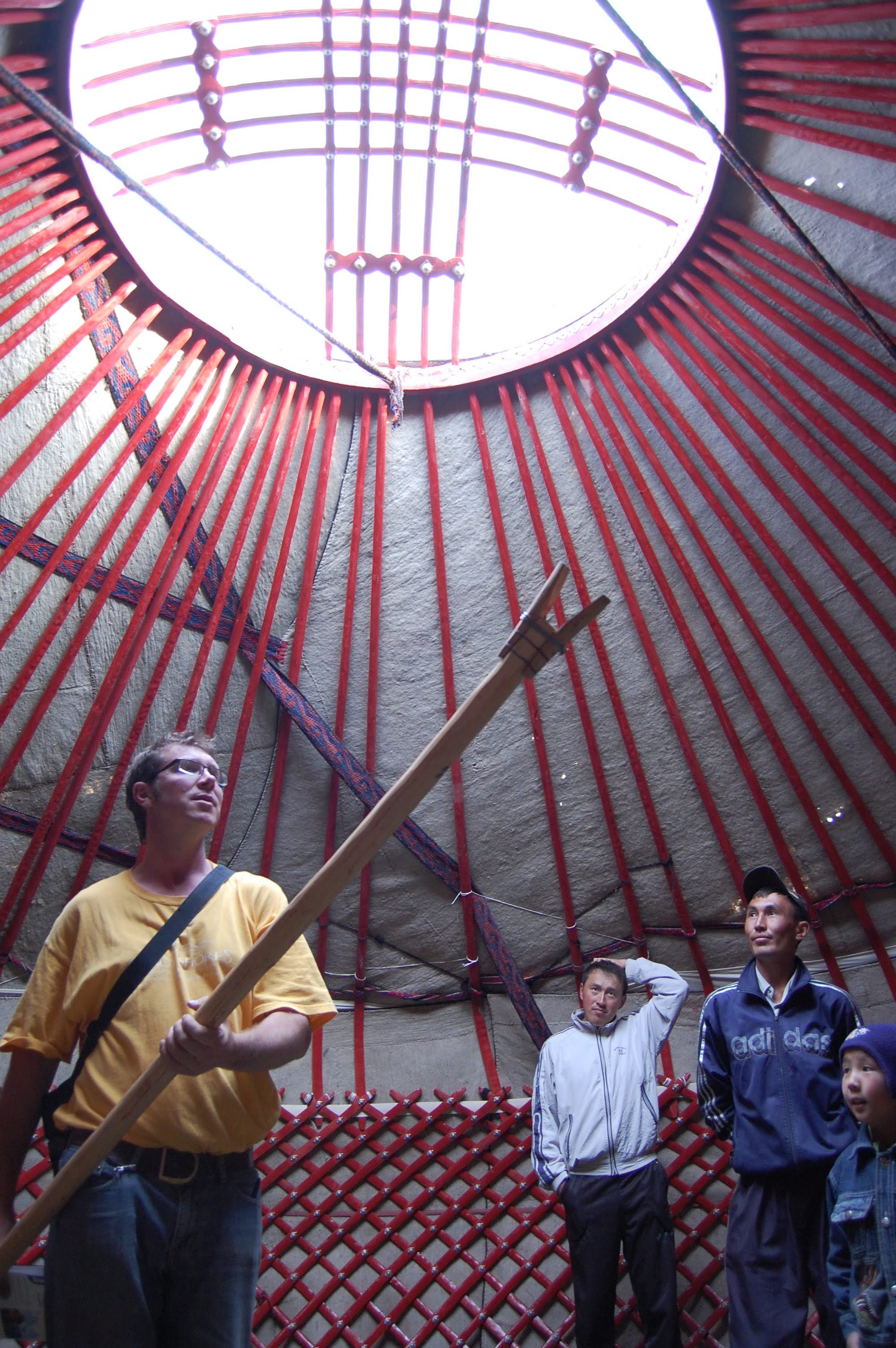
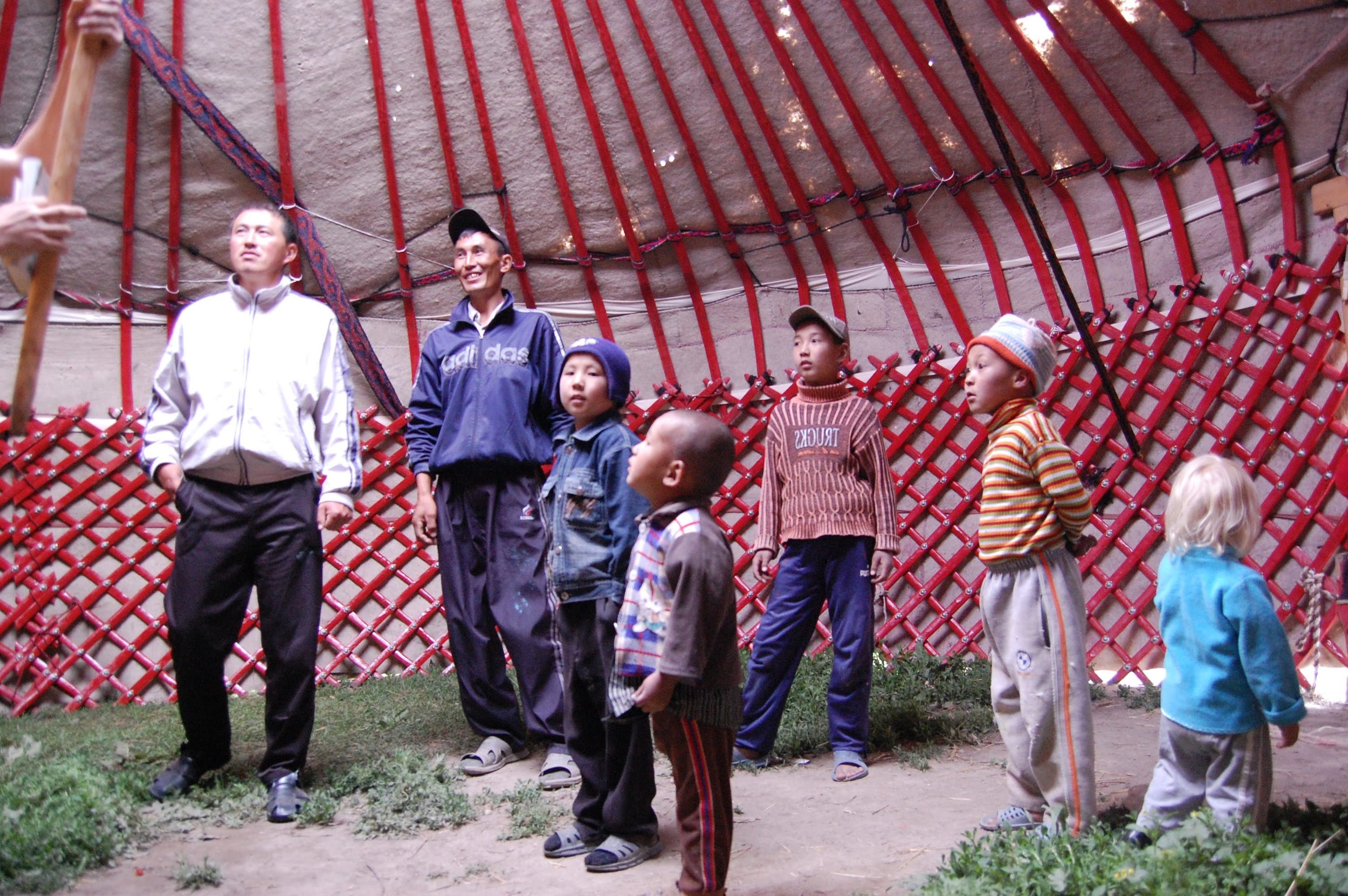
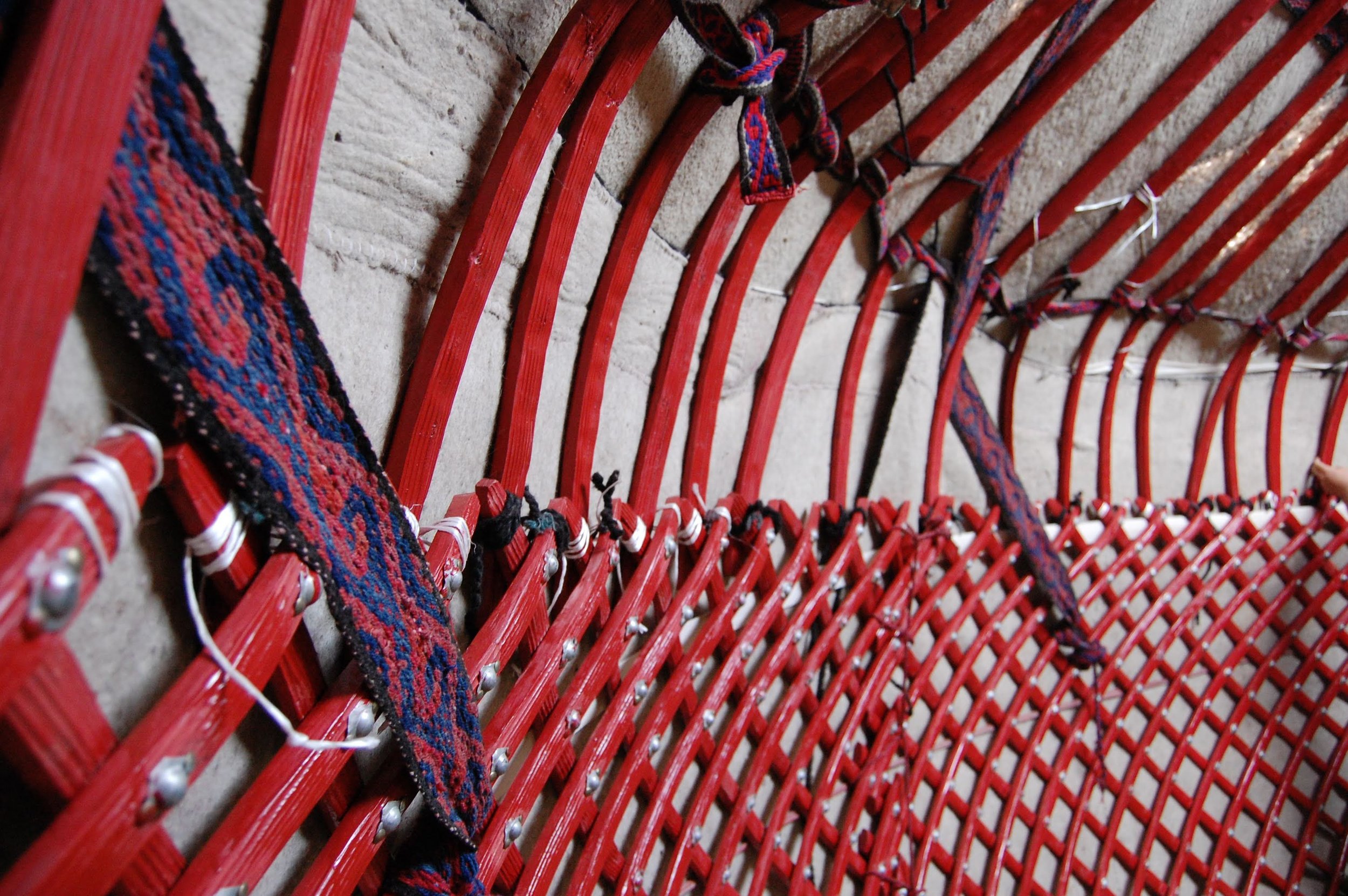
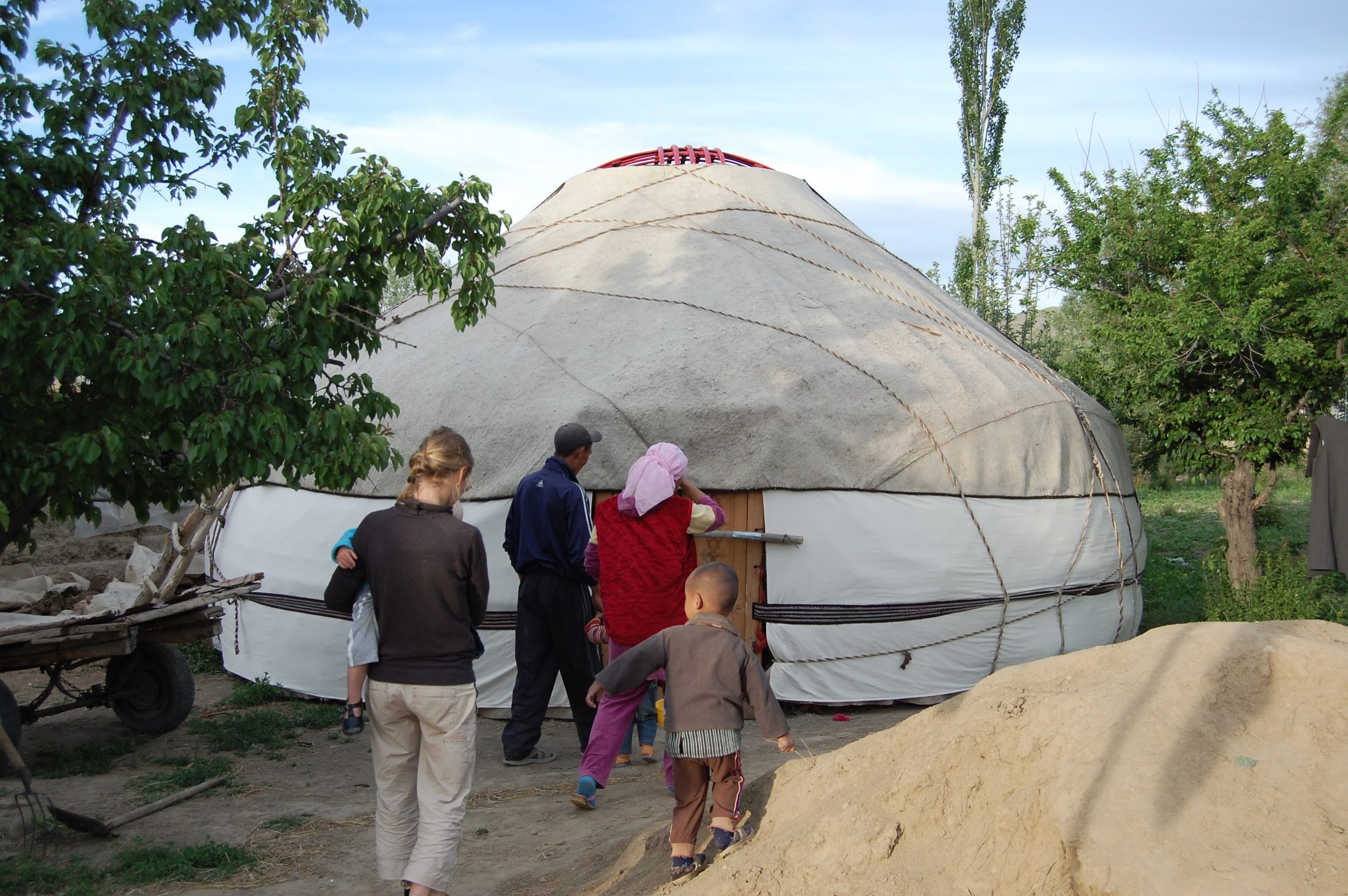
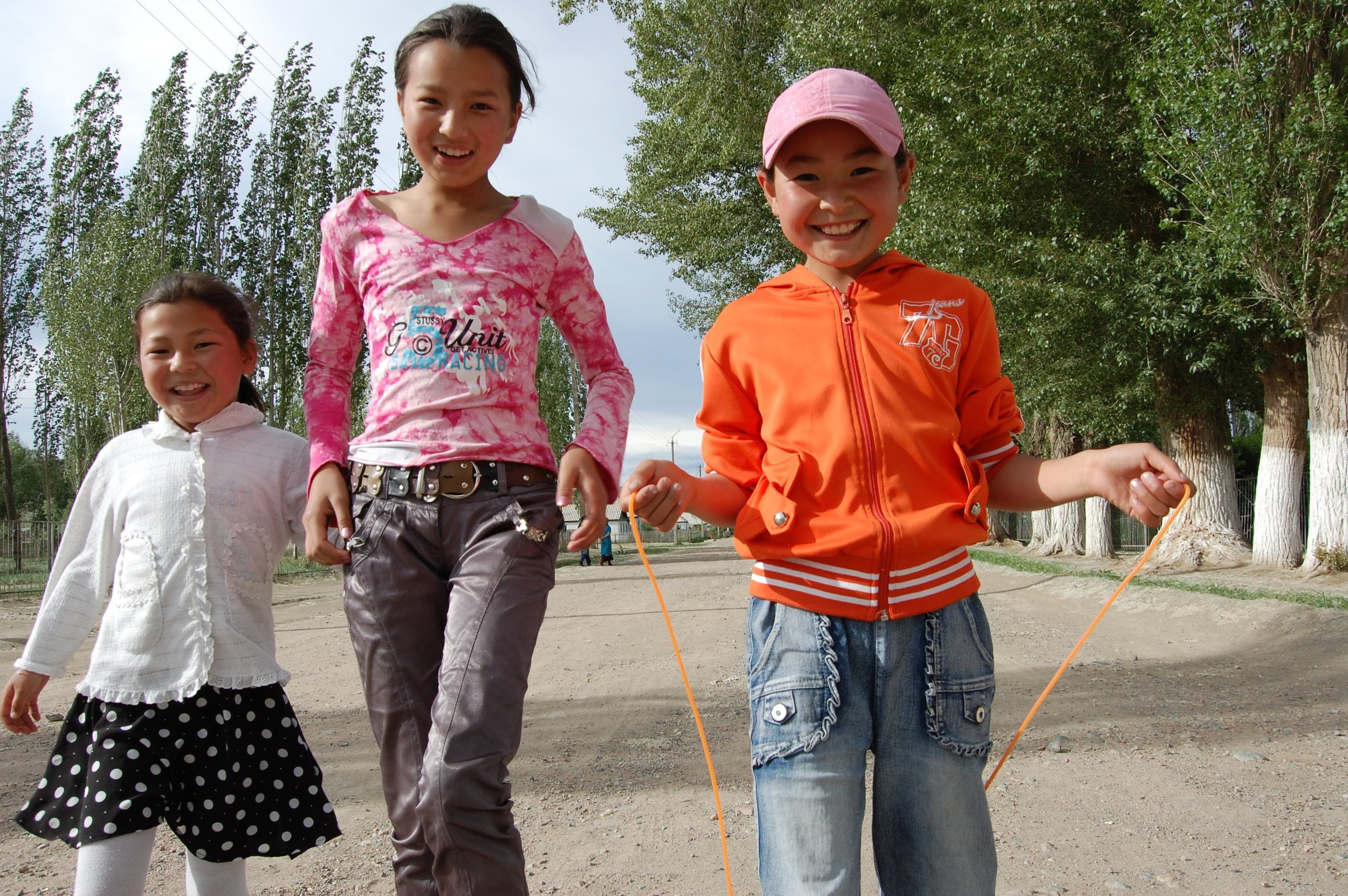
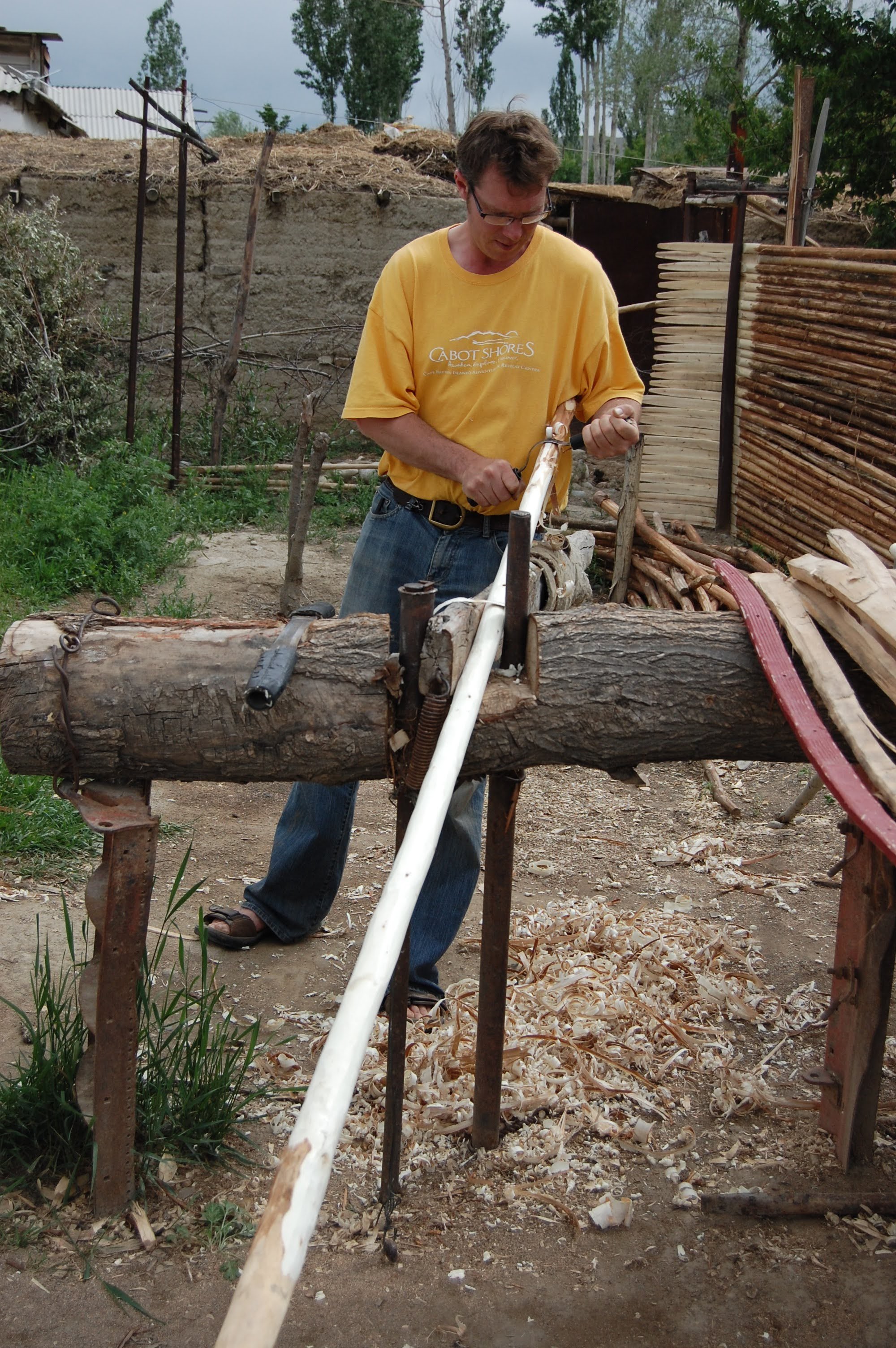
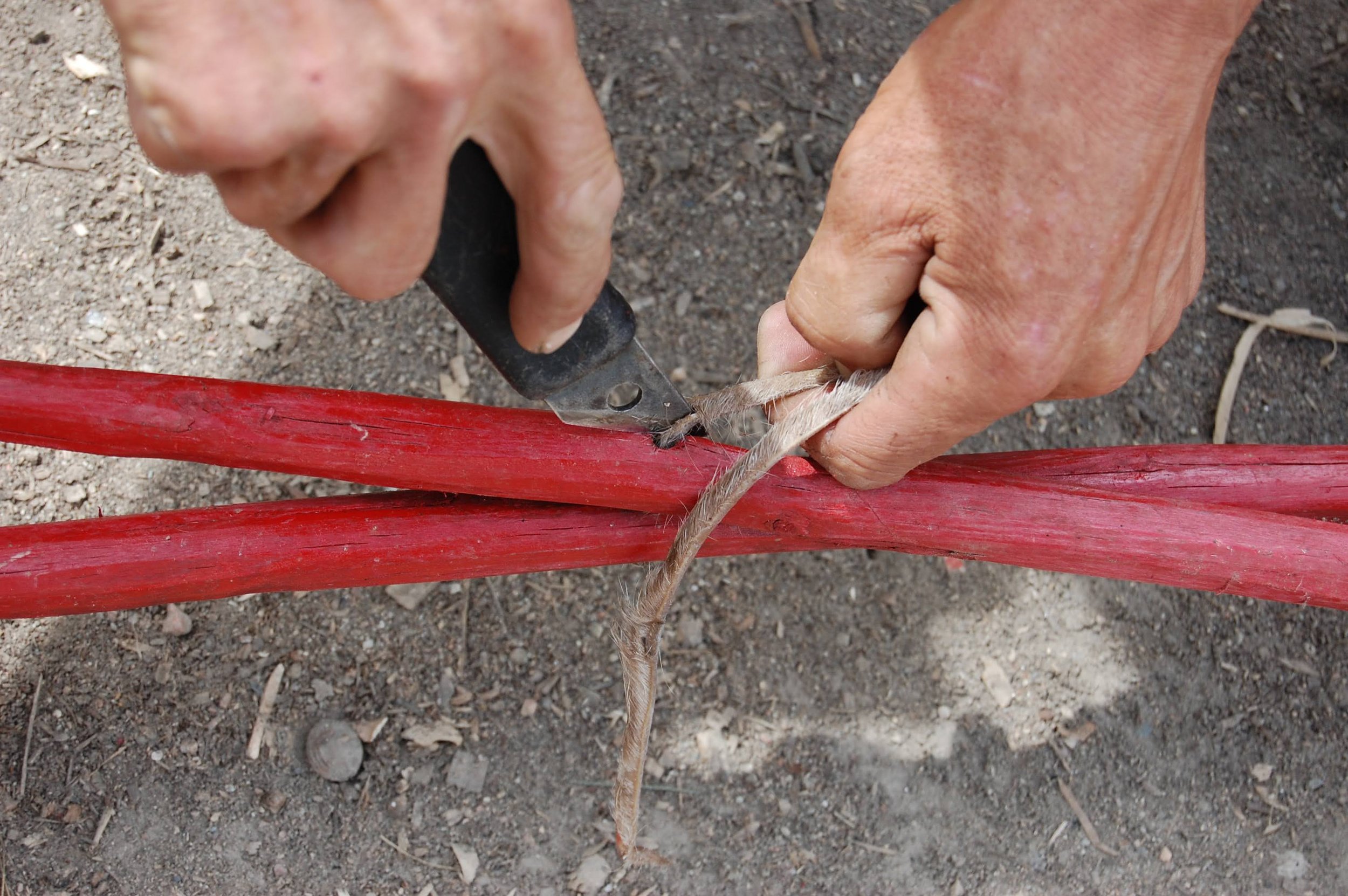
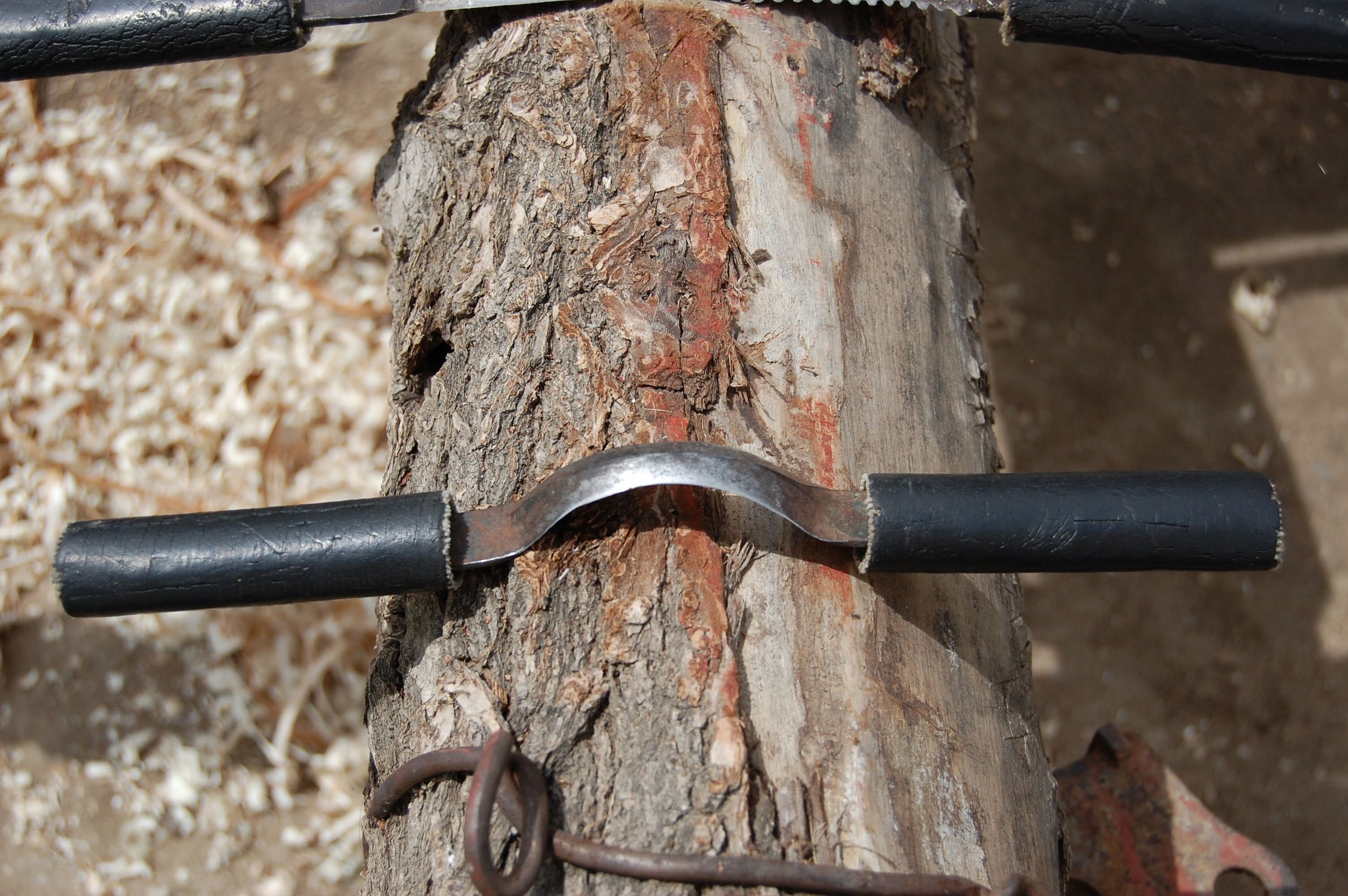
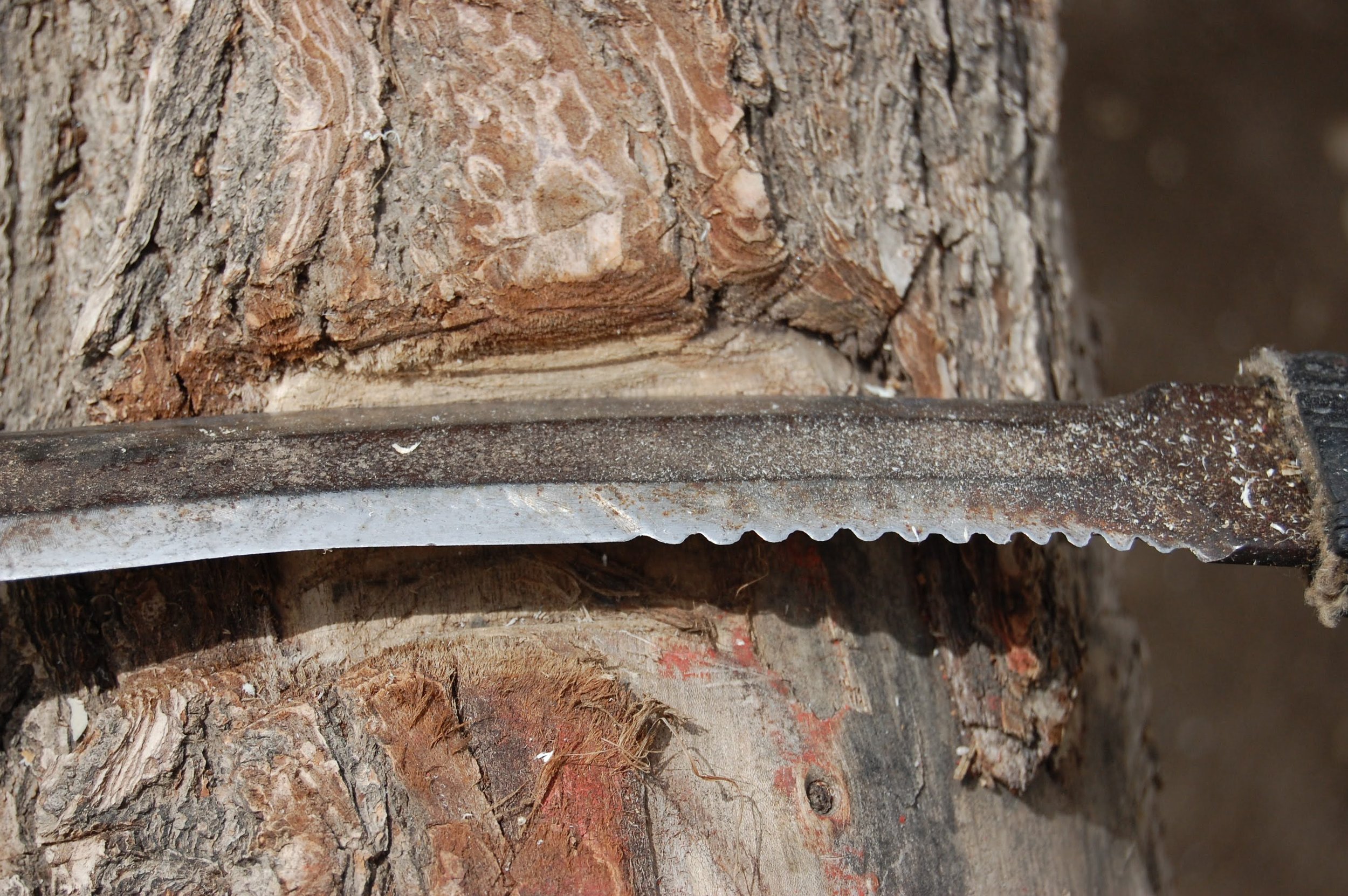
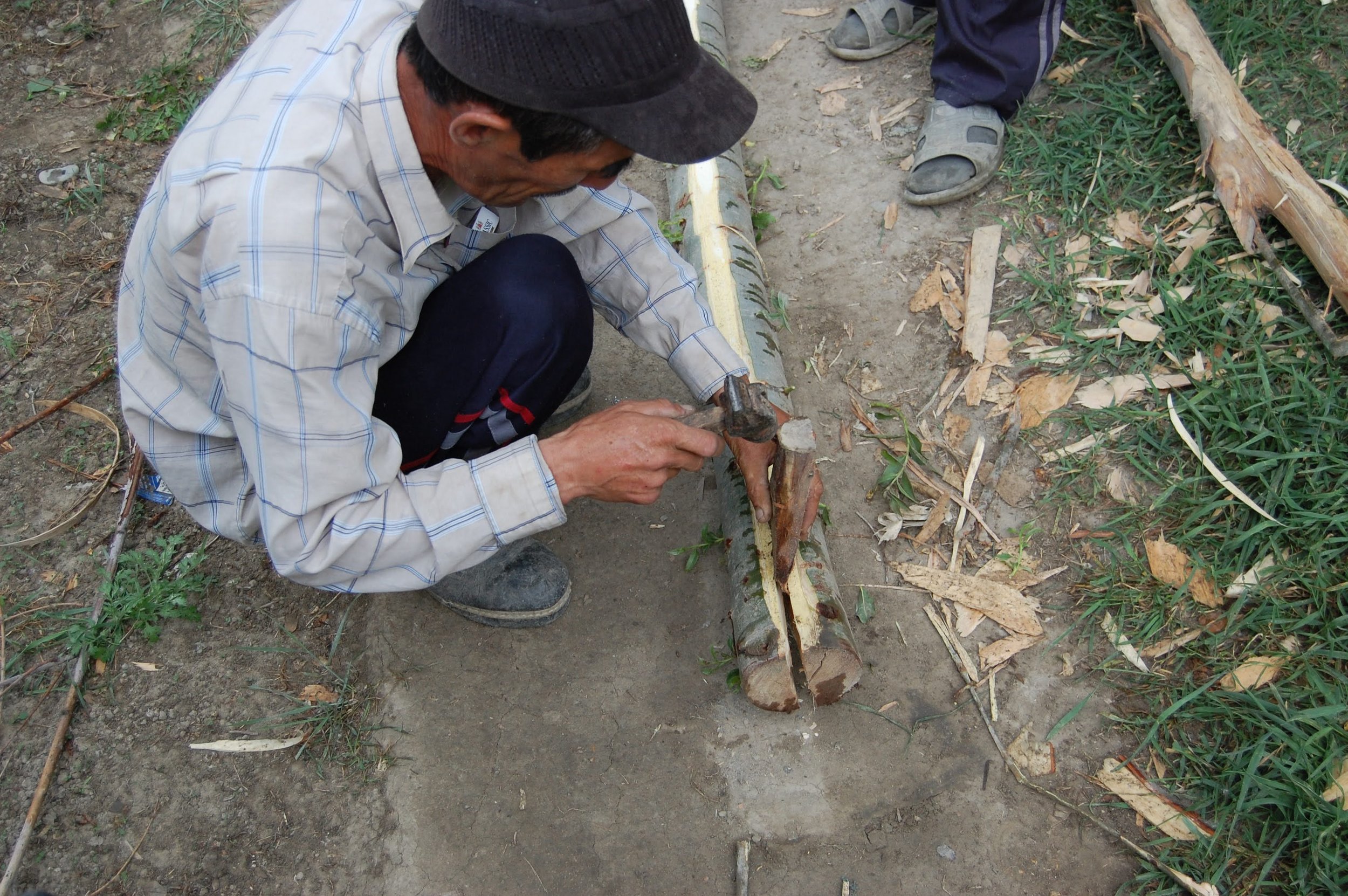
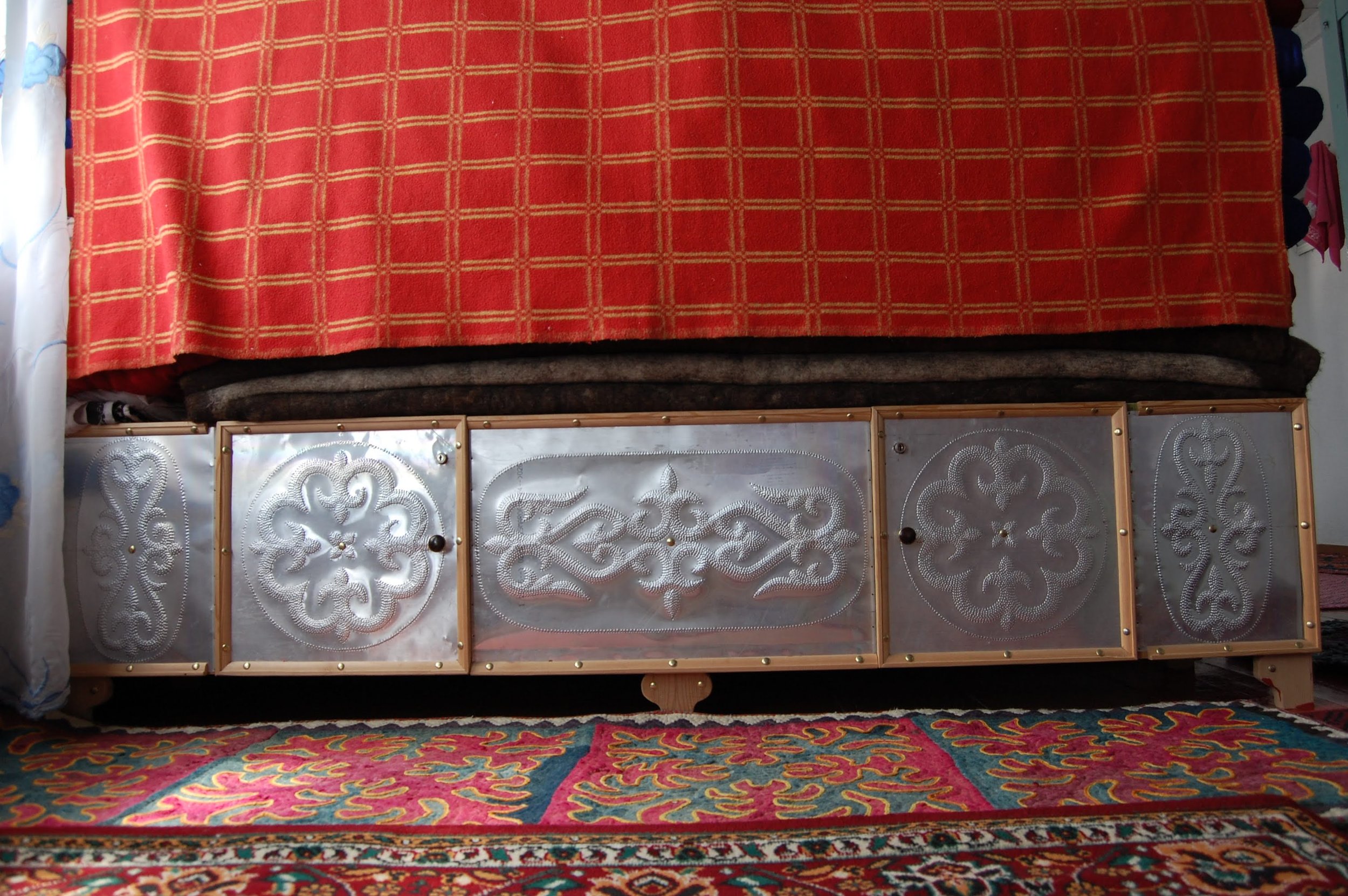
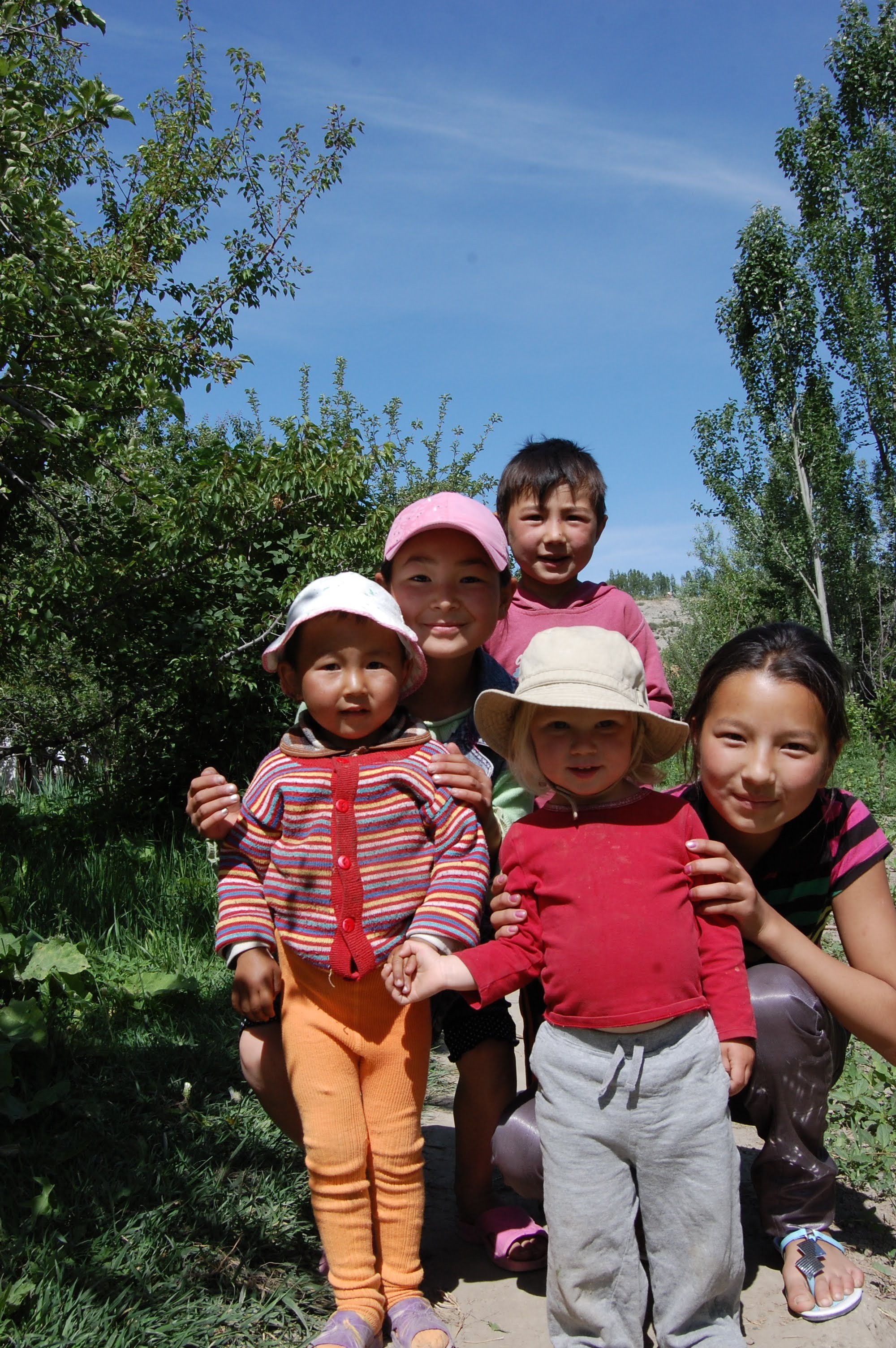
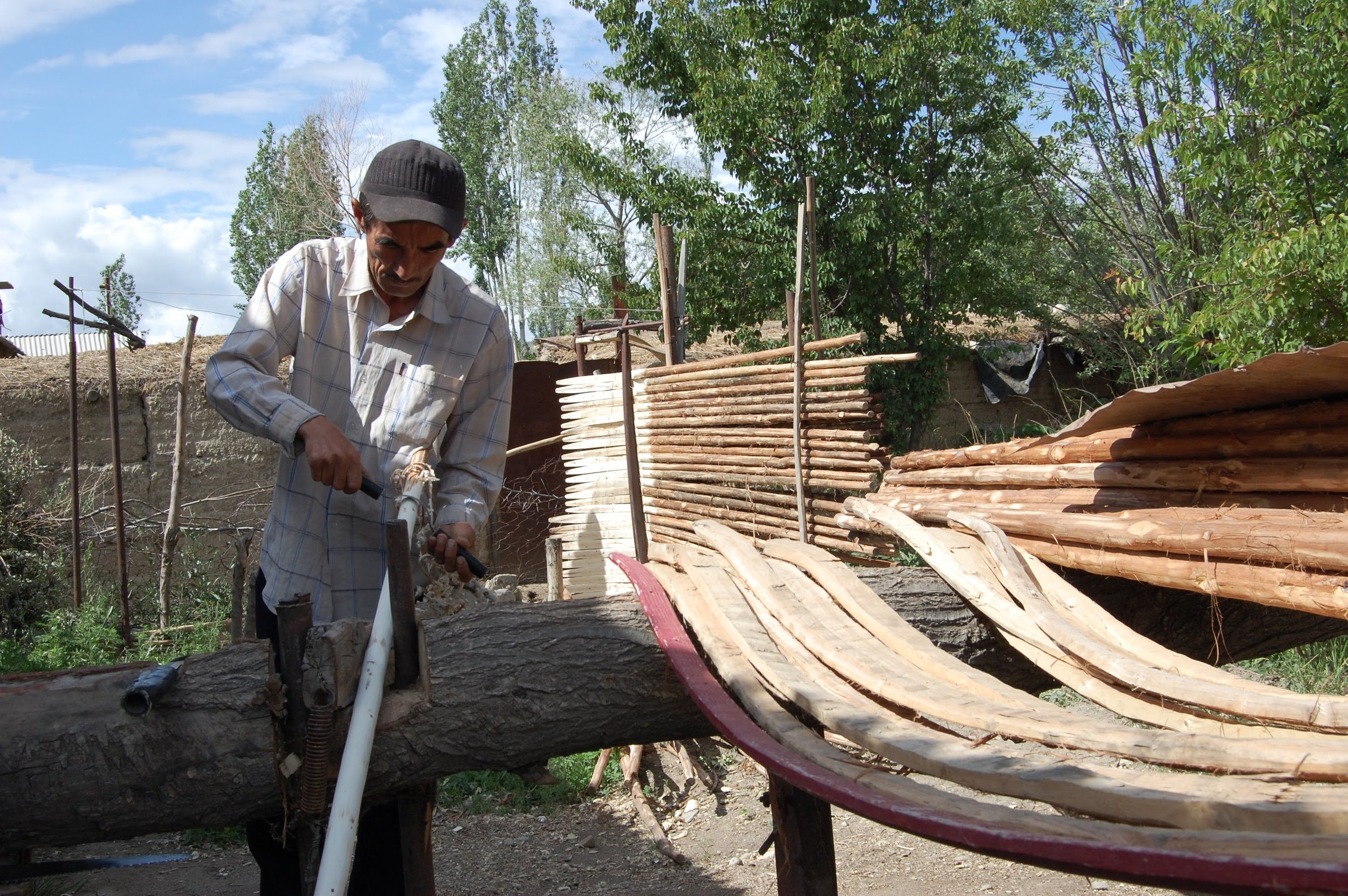
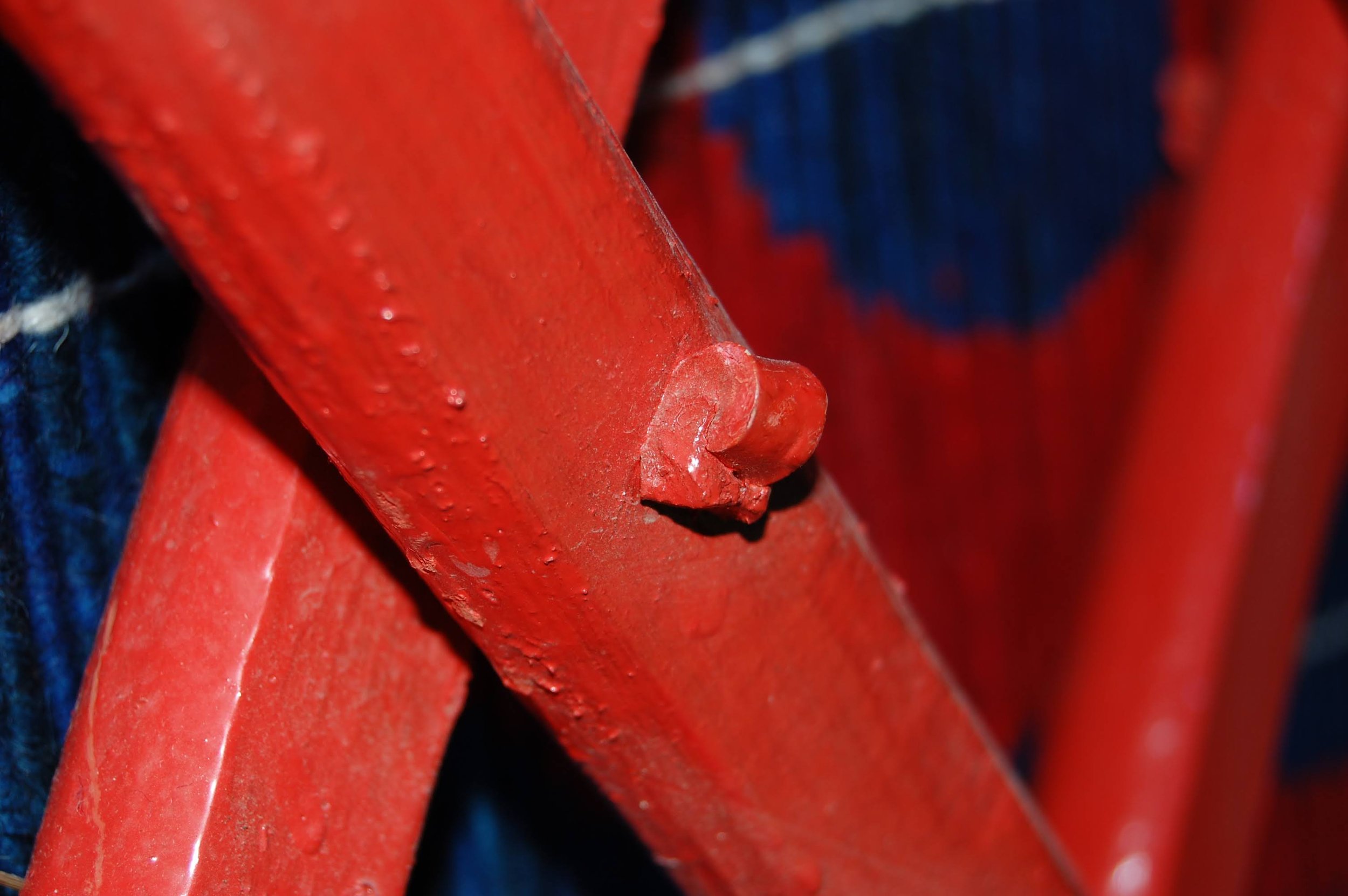
We headed to Kyzyl-Tuu, a small village full of yurt builders and artisans that are specialised in the individual components of yurt making, including wheel makers, frame makers, shyrdak, chij and felt cover makers. We had learnt about Kyzyl-Tuu from Paul King, a yurt builder in the UK. The small village of probably one thousand people had an amazing feel to it. It felt untouched and was beautifully situated around a river and rolling hills.
We met Mr Troombek, a builder of yurt frames and his wife, Geepara. A huge pile of fresh bread, jam, candies and tea were laid out on a low table. There were two related families living on the land, within two small houses separated by a large garden that had mostly potatoes and a pit outhouse in between. After tea and getting settled into our room, Yara and I played with the children of the home and Alex began working with Mr Troombek.
Mr Troombek steams his uuk(roof) poles first to straighten them. To bend the ends he uses a hip operated greenwood break to do both jobs of bending and clamping. He showed us that the break does the bending, not your hands. Then he shaved a pole with one of his knives; one is for rough work with a comb-like blade for making the grooved design on the kerege(wall) and ukk. The other is a curved drawknife used to finish the round stick. He demonstrated splitting tal (willow) for a wheel with a hammer wedge and billets. The uuk is half dry by the time he uses the finishing knife, which takes a bit of time, but leaves a nice finish.
Yara and I played with the children by the river. When we got back Mir told us the family had prepared a special lamb which had been boiling all day. We sat on the floor, around the low table, with both families and all of the children. Mr Troombek’s son came around with a teapot and bucket so we could wash our hands. The grandparents, Alex and I got the legs and everyone else got a smaller cut. The meat was warm and soft. Next, mutton broth with noodles was served. “Five fingers” is an old Kyrgyz tradition of eating the noodle soup with your fingers. It is a sign of abundance within the family. To give thanks after each meal we placed our hands over our faces and slowly moved our hands down.
We went for a lovely walk around town; saw the local school, watched donkeys run wild and got ice cream for the children. We stopped at a neighbour’s house to see a chij masters at work. A young lady was hand spinning wool around the chij, following a pattern she had memorized. The chij would be used for yurt walls on top of the felt and would be made into a door covering and backed with felt.
Then we went to see one of Mr Troombek’s yurts. It was a 22 ft yurt, with a felted cover and cotton canvas around the walls. It was a few years old and needed a little repair, but overall was beautiful with red walls and simple decorations. We were very thankful to have Mir with us to help translate. He was very laid back and really connected with Yara as he had a son about Yara’s age.
